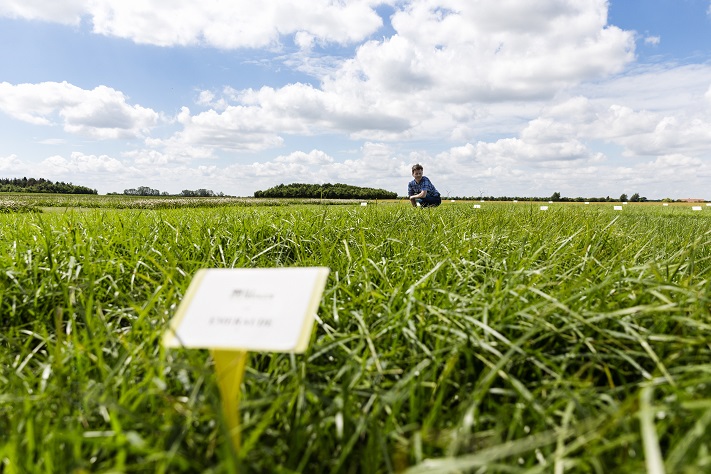Diploid or tetraploid?
Perennial ryegrass thrives on most soil types, except when under very dry conditions or infertile soils.
The species is perennial and suitable for both grazing and cutting. Perennial ryegrass has high sugar content, high digestibility and produces a high yield of good quality. Perennial ryegrass is particularly suitable for mixtures with white clover.
Diploid varieties are – compared to tetraploid – distinguished by being more fine-leaved and dense in growth. They are more resistant to damage by grazing cattle. The diploids have a higher dry-matter content.
Tetraploid varieties are typically darker and more broad-leaved, and slightly higher yielding with higher sugar content, better winter hardiness, and more open growth. DLF has developed tetraploid varieties that are as dense as most diploids, making them particularly suitable for grazing. Their seed size is larger than diploids making them ideal for inclusion in over-seeding mixtures. They produce fewer, larger tillers than diploids leading to more open swards which can give better compatibility with white clover. Their development is regarded as a major advance in grass breeding.

Diploid or tetraploid?
Diploid varieties
- are more winter-hardy under frost
- have a higher dry matter content and dries faster
- are more dense and with a better ground cover
Tetraploid varieties
- are more palatable
- have a slightly higher yield
- are more winter hardy under snow
- are more resistant to rust and other diseases
- are more broad-leaved and with an open growth
- fits perfect in mixtures with clover
Recent research has shown that most tetraploids outperformed diploids for grazing utilisation. Thirty varieties of perennial ryegrass on the 2016 Irish recommended list were rotationally grazed by dairy cows. The total available herbage was measured as were the pre and post- grazing heights allowing for the grazing utilisation to be determined. This improved utilisation and hence intake will improve the yield of both milk and meat.
An increased amount of grass in the cow´s feed ratio will
- Increase protein supply from home-grown feed
- Improve health of the cow due to better rumen function
- Reduce nitrogen leaching to the environment
- Reduce greenhouse gas emissions from ruminants
